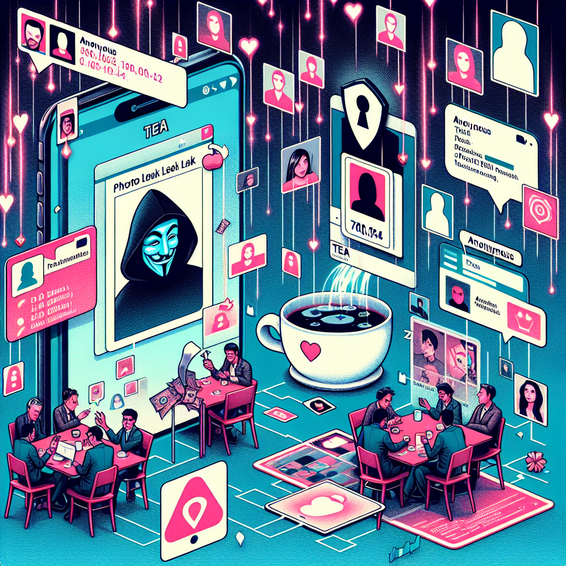When a women’s dating app like Tea gets hacked and over 70,000 user selfies, IDs, and verification photos end up posted across 4chan, it’s a gut punch to both digital privacy and the security community. This isn’t just a headline—it’s a real-world disaster, putting people’s identities, safety, and dignity on display in one of the most toxic corners of the web. As incidents like this keep piling up, IT leaders, app developers, and business owners can’t ignore the hard truths about data security and community management online.
How the Tea App Breach Happened
The Tea app, aimed at women’s dating safety, saw an orchestrated hack emerge directly from 4chan. Attackers exploited weaknesses in the app, pulled sensitive ID data, and rapidly leaked it online—over 72,000 user verification photos according to the Hindustan Times coverage. This wasn’t a single slip but a systemic failure—app security, user protection, infrastructure, and finally, community fallout.
Worse, the breach didn’t just leak photos. It included uploaded IDs and possible location data, as widely reported when a map of user data also surfaced (Times Now). For an app marketed as privacy-first and safety-enhancing, this is a brand- and mission-level failure.
Analysis: The Real-World Impact and Key Lessons
This breach is bigger than one company—it’s a warning for every app founder and IT pro rolling out platforms that handle highly sensitive user data. The consequences for Tea are immediate: users’ trust is broken, regulatory scrutiny is coming, and the brand will now forever be linked to a massive personal data dump. The implications extend to the dating and social app industry as a whole, where users demand (and increasingly, regulators require) better due diligence on personal information safety.
- Users are exposed to doxxing, stalking, and even physical risk as faces and verification details circulate in hostile corners of the internet.
- The dating app segment faces broader trust issues, with millions questioning which platforms can actually keep them safe.
- Regulators and privacy advocates will clamp down—expect fines, forced audits, and investigations into how this was even possible.
- The dark side of anonymous forums and imageboards like 4chan has again been put under the spotlight. As Internet Matters notes, these forums have long been hubs for coordinated harassment and hacking campaigns. See the Wikipedia overview for wider context on this online ecosystem.
IT security leaders and business risk managers need to look closer at what truly constitutes strong user data protection. Privacy-washing and generic legalese aren’t enough, especially if threat actors can route around your controls in a matter of hours. For more perspective on breach business impact, see this internal analysis on business response and my breakdown on the real downstream costs.
IT Pro Response: What to Do (and What Not to Do)
If you’re building or operating any app that handles private data—especially anything as intimate as identities and physical locations—these steps are not optional:
- Enforce robust encryption at rest and in transit: If a breach happens, data should be useless without keys.
- Minimize data collection: Only request and store the absolute minimum needed for operation, and never keep files like government IDs longer than necessary.
- Harden authentication: Mandate 2FA and strong passkeys, especially for admin access and sensitive user actions.
- Regularly pen-test and audit APIs: Don’t wait for hackers to discover your weaknesses—beat them to it with real-world offensive testing.
- Build for breach visibility: Implement structured monitoring and alerts for any suspicious access patterns. This helps react in minutes, not days or weeks. See how observability works in practice.
- Run breach and recovery drills: Cyberattack “fire drills” ensure the team knows exactly what to do when—not if—a breach happens.
The best solutions deploy security by design. Bake privacy into your app architecture from day one—not as an afterthought. Invest in continuous security education for the team. Don’t trust third-party plug-ins blindly; validate codebases, and reduce your attack surface where possible. Consider external audits as a fundamental investment rather than a compliance checkbox. If handling financials or healthcare, study these actionable security lessons.
Most importantly—if your brand is built on trust and safety, don’t farm out core user protections. This breach is proof that your users’ lives may literally be on the line. Rebuilding after a hack like this is exponentially harder than getting security right up front.
Conclusion: No More Excuses—Privacy-First or Not at All
The Tea app breach is a stark lesson: when you handle people’s most sensitive information, you own the risk, the fallout, and the responsibility. Security shortcuts, inadequate data discipline, and poor crisis response aren’t just business risks—they’re reputational and human risks. If you’re running an app, you’re now on notice. Building for privacy and resilience isn’t optional, it’s survival. If you want to stay ahead of these evolving attacks, review our cybersecurity best practices and make privacy-first design your new normal.
